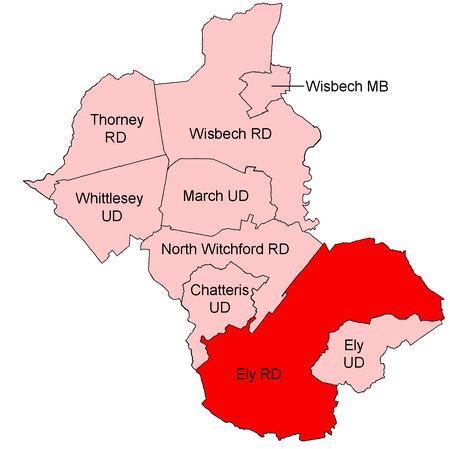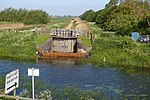Ely Rural District
Districts of England abolished by the Local Government Act 1972Districts of England created by the Local Government Act 1894Ely, CambridgeshireHistory of CambridgeshireRural districts of England ... and 1 more
Use British English from August 2012

Ely Rural District was a rural district in England from 1894 to 1974. It was named after Ely, but did not include the city itself, instead covering the rural area to the west and north of it. It formed part of the administrative county of the Isle of Ely from 1894 to 1965, when this was merged into Cambridgeshire and Isle of Ely.
Excerpt from the Wikipedia article Ely Rural District (License: CC BY-SA 3.0, Authors, Images).Ely Rural District
Hale Fen Lane (TROd byway), East Cambridgeshire Coveney
Geographical coordinates (GPS) Address Nearby Places Show on map
Geographical coordinates (GPS)
| Latitude | Longitude |
|---|---|
| N 52.415 ° | E 0.161 ° |
Address
Hale Fen Lane (TROd byway)
Hale Fen Lane (TROd byway)
CB6 2DF East Cambridgeshire, Coveney
England, United Kingdom
Open on Google Maps










